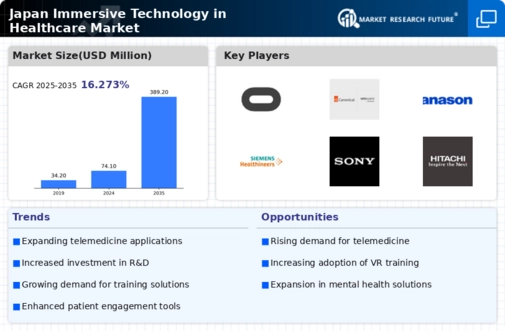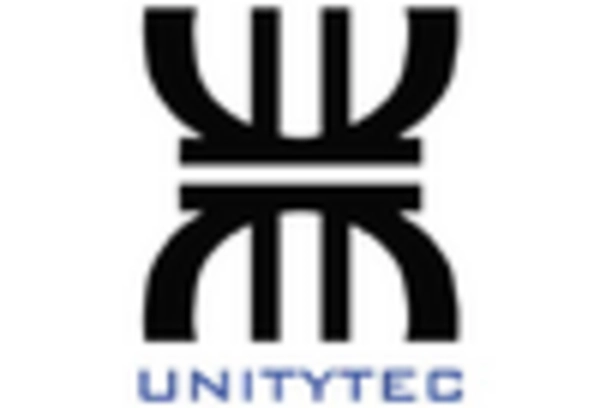Government Support and Funding
The Japanese government has been actively promoting the adoption of advanced technologies in healthcare, which serves as a crucial driver for the immersive technology-in-healthcare market. Initiatives aimed at enhancing healthcare services through technology have led to increased funding for research and development. For example, the government allocated approximately ¥100 billion to healthcare innovation in recent budgets, which includes support for immersive technologies. This financial backing encourages healthcare institutions to invest in AR and VR solutions, thereby fostering growth in the immersive technology-in-healthcare market. The collaboration between public and private sectors is expected to yield innovative solutions that enhance patient care and medical training.
Aging Population and Healthcare Demand
Japan's aging population is a significant factor influencing the immersive technology-in-healthcare market. With over 28% of the population aged 65 and older, there is a growing demand for healthcare services that can cater to the unique needs of elderly patients. Immersive technologies, such as VR therapy and AR-assisted rehabilitation, are being explored as effective solutions to improve the quality of life for this demographic. The immersive technology-in-healthcare market is likely to benefit from this trend, as healthcare providers seek innovative ways to address the challenges posed by an aging society. The potential for immersive technologies to enhance patient engagement and treatment efficacy makes them an attractive option for healthcare providers.
Increased Focus on Patient-Centric Care
The shift towards patient-centric care in Japan is a notable driver for the immersive technology-in-healthcare market. Healthcare providers are increasingly recognizing the importance of involving patients in their treatment processes, which aligns with the capabilities of immersive technologies. Tools such as VR simulations can empower patients by providing them with a better understanding of their conditions and treatment options. This approach not only enhances patient satisfaction but also improves adherence to treatment plans. As the healthcare landscape evolves to prioritize patient engagement, the immersive technology-in-healthcare market is expected to grow, driven by the demand for solutions that facilitate better communication and understanding between patients and providers.
Technological Advancements in Healthcare
The rapid evolution of technology in Japan is a primary driver for the immersive technology-in-healthcare market. Innovations such as augmented reality (AR) and virtual reality (VR) are increasingly being integrated into medical training and patient care. For instance, the market for AR and VR in healthcare is projected to reach approximately $2.5 billion by 2026, indicating a robust growth trajectory. This technological advancement not only enhances the quality of medical education but also improves patient outcomes through more engaging treatment options. As healthcare providers in Japan adopt these technologies, the immersive technology-in-healthcare market is likely to expand significantly, driven by the demand for more effective training tools and patient engagement solutions.
Rising Healthcare Costs and Efficiency Needs
The increasing costs associated with healthcare in Japan are driving the need for more efficient solutions, thereby propelling the immersive technology-in-healthcare market. As healthcare expenditures continue to rise, estimated to reach ¥42 trillion by 2025, there is a pressing need for technologies that can optimize resource utilization. Immersive technologies can streamline training processes and improve patient management, potentially reducing costs in the long run. By integrating AR and VR into healthcare practices, providers can enhance operational efficiency and patient outcomes, making a compelling case for investment in the immersive technology-in-healthcare market. This focus on cost-effectiveness is likely to shape future developments in the sector.

















Leave a Comment